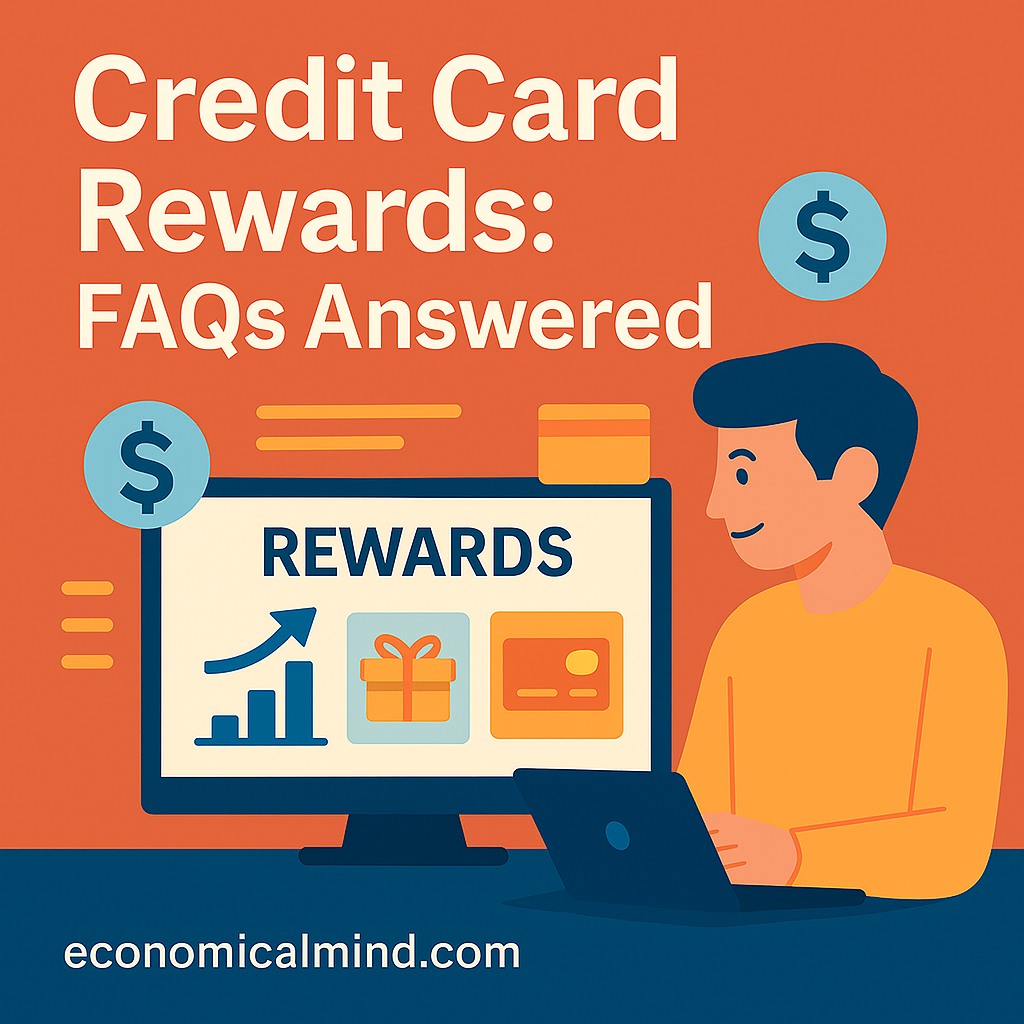
If you’ve ever wondered how credit card rewards really work — or whether they’re truly worth the hype — you’re not alone. From cash back to travel miles, rewards programs can be powerful tools for smart spenders, but they also come with a few hidden catches.
This FAQ guide breaks down everything you need to know about credit card rewards, how to maximize them, and how to avoid the common pitfalls that cost users money.
What Are Credit Card Rewards?
Credit card rewards are incentives offered by card issuers to encourage spending. When you use your credit card for everyday purchases, you earn points, miles, or cash back that can later be redeemed for perks like:
- Statement credits (direct cash back)
- Gift cards or merchandise
- Travel rewards (airline miles, hotel stays)
- Discounts or exclusive offers
The key is understanding how each program structures its rewards — and which aligns best with your lifestyle.
How Do Credit Card Rewards Work?
Every purchase you make earns a percentage of your spending back. For example, a 2% cash-back card gives you $2 for every $100 you spend. Some cards offer higher rates for certain categories like:
- 3% on groceries
- 2% on gas or dining
- 1% on everything else
Your rewards accumulate over time and can usually be redeemed via your online banking portal or app.
What Types of Credit Card Rewards Exist?
Here are the three main types of reward systems:
- Cash Back: Simple and flexible — you get a percentage of your purchases back as cash.
- Points: Earn points per dollar spent, which can be redeemed for travel, merchandise, or gift cards.
- Miles: Best for frequent travelers — points translate into flight miles or travel perks.
Some premium cards even combine systems, giving you flexibility depending on redemption goals.
Do Rewards Cards Have Hidden Costs?
Yes — rewards aren’t truly “free.” Here’s what to watch for:
- Annual fees: Premium cards often charge $95–$550 per year.
- Higher interest rates: Rewards cards tend to have higher APRs than non-rewards cards.
- Redemption restrictions: Some points expire or have blackout dates for travel.
If you regularly carry a balance, the interest charges can outweigh the value of your rewards.
What’s the Best Strategy for Earning Credit Card Rewards?
To make rewards work in your favor:
- Pay your balance in full each month. This avoids interest that cancels out rewards.
- Align your spending categories. Pick cards that reward your biggest monthly expenses (like groceries or gas).
- Stack bonuses. Combine category bonuses with sign-up offers or portal deals.
- Track points. Use a spreadsheet or app to manage expiration dates and redemptions.
Consistency beats complexity — focus on cards that fit your real-life spending.
Should You Open Multiple Rewards Cards?
It depends on your goals and discipline. Opening multiple cards can:
Pros:
- Boost your total rewards potential
- Expand your credit utilization ratio (may help credit score)
Cons:
- Make managing payments harder
- Increase risk of missed payments or overspending
- Cause temporary dips in your credit score from new inquiries
If you decide to juggle multiple cards, automate payments and review each card’s value yearly.
Are Rewards Taxable?
In most cases, credit card rewards are not taxable because they’re considered rebates, not income. However, if you earn bonuses for opening a business account or referring others, those may count as taxable income — always check your issuer’s policy or consult a tax professional.
What Are the Common Mistakes People Make?
Even savvy cardholders fall into these traps:
- Overspending just to earn points
- Ignoring redemption deadlines
- Not reading fine print on reward categories
- Forgetting about annual fees
The best rule of thumb: never change your spending habits just to chase rewards.
Key Takeaway
Credit card rewards can be a valuable tool for those who spend strategically and pay off balances each month. The key is to treat rewards as a bonus, not a reason to spend more.
When used wisely, they can unlock free travel, extra savings, or cashback that fits neatly into your overall financial plan.
